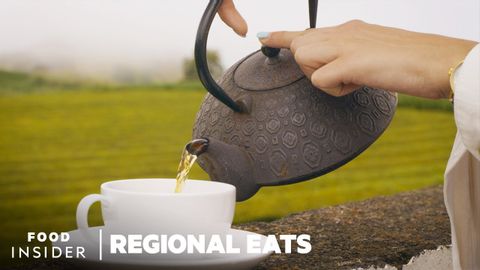歐洲最古老的茶園是如何製作茶葉的 | 地區飲食 (How Tea Is Made At The Oldest Tea Farm In Europe | Regional Eats)
 沒有此條件下的單字
沒有此條件下的單字US /ˈprɑsˌɛs, ˈproˌsɛs/
・
UK /prə'ses/
- v.t.用電腦處理(資料);(依照規定程序)處理;處理;流程;加工;理解
- n. (c./u.)(規定的)程序;過程;進程;方法;法律程序;進程
US /əˈɡrɛsɪv/
・
UK /əˈgresɪv/
- adj.激進;侵略性的;(疾病)快速發展的;積極的
US /kənˈtrɪbjut/
・
UK /kən'trɪbju:t/
- v.t./i.導致;歸因於;捐贈;貢獻;投稿文章至報章雜誌
